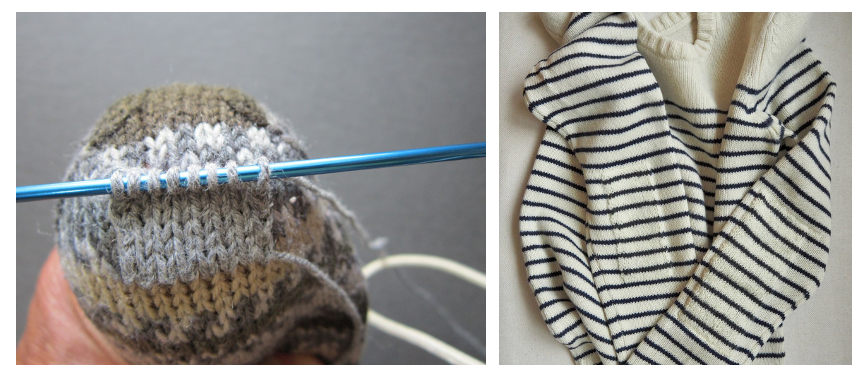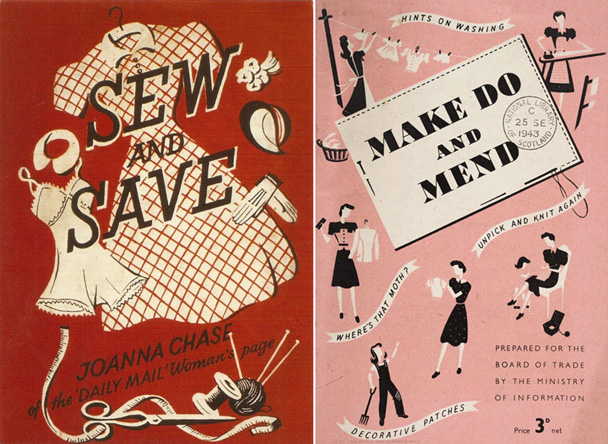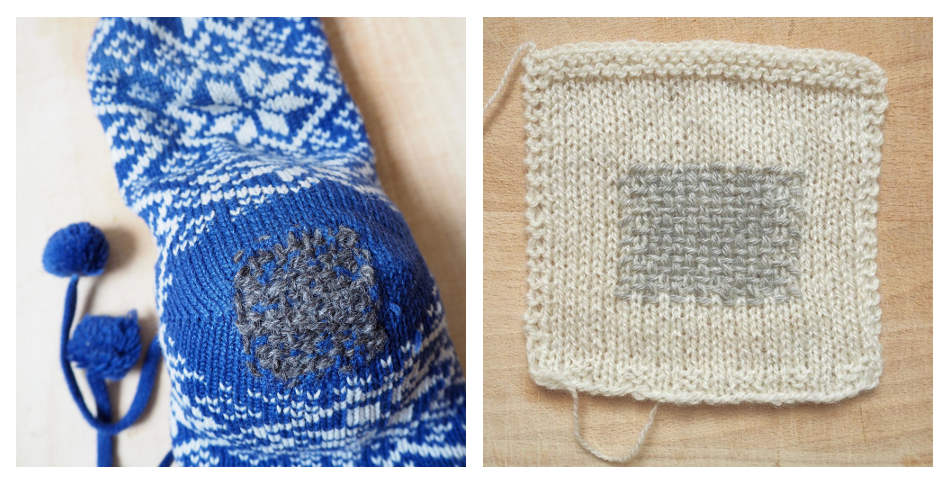We’re all familiar with that little sense of disappointment that came with finding a hole in a very much loved piece of knitwear. Fortunately there are many solutions to this common problem, and depending on the size and location of the hole, you’ll find some mending techniques more suitable than others. Many bloggers and designers have already dedicated articles and tutorials on that topic, so instead of repeating what has been already said, this post will direct you toward the best readings to teach yourself how to become a skillful mender!
To do so we’ll cover three essential darning methods that can be used to repair pretty much any kind of hole or simply reinforce thinning areas in your knitwear; the weave darn, the Swiss darn and the knitted patch.
In November last year Louisa Bond – the Norwegian philosopher and writer behind the blog Worn Values – published a very helpful article including a short description and a tutorial for each of these methods. We’ll keep referring to that article all along this post, as well as adding some complementary readings.
1. The weave darn
The weave darn is certainly the most common of the three techniques, partly because it is very simple to learn, quick to achieve and works just fine for most small to medium sized holes. To method is to simply need to weave a thread back and forth, horizontally and vertically across the hole to create a woven patch slightly wider than the surface you want to hide. For a full tutorial please refer to Louisa Bond’s article.
Although the weave darn is a very popular mending method, it has the disadvantage of not being stretchy, it can be fairly visible and it cannot be worked on large sized holes. So for any hole bigger than a 50p coin, it would be advisable to switch for another type of darn.

2. The knitted patch:
A knitted patch is a very efficient way to cover large damaged areas of knitted fabric as it simply consists of knitting a pocket over the hole, that you then graft at the top using a kitchener stitch. The gauge of the patch and original knit should be exactly the same to insure that the two blend as smoothly as possible.
Not only is this method quick but it also offers you the possibility to recreate colour motifs, making the repair nearly invisible. Once again for a full tutorial refer to Louisa’s article.
3. the Swiss Darning:
The Swiss darn – also known as duplicate stitch – is the most time consuming of the three methods but also the most rewarding as it’s the only one that truly allows you to create an invisible repair. Most of the time, Swiss Darning will be used to reinforce thinning areas in your knitwear by simply working over the original stitches and so fully maintain the stretch of the fabric. Although Louisa’s post is pretty descriptive, we would also suggest you to look at this tutorial which offers better close up photos.
As Tom van Deijnen – aka. Tom of Holland – skillfully demonstrates in the photos above, Swiss darning can also be used to repair big holes as long as a support is provided to hold the stitches created with the tapestry needle. On the example above, Tom has first created a framework using a yellow sewing thread. He then worked the stitches over the frame using the Swiss darning method. By doing so according to the original stranded motif, the repair becomes completely invisible. Indeed contrary to the knitted patch, the Swiss darn doesn’t add any layer of fabric on the edge of the repair and so will completely blend with the original fabric.
 Mending is empowering because it allows you to make your clothes last, to develop new skills and it goes against current standards of fast fashion and consumerism. It is about quality rather than quantity, as well as environmental sustainability, challenging yourself and being creative.
Mending is empowering because it allows you to make your clothes last, to develop new skills and it goes against current standards of fast fashion and consumerism. It is about quality rather than quantity, as well as environmental sustainability, challenging yourself and being creative.
If you’d like to learn more about mending and the various techniques you can use to fix your garments, we’d strongly suggest you explore Louisa and Tom‘s websites; Worn Values and Tom of Holland as both share a philosophical approach of mending that is truly enlightening and inspiring.
Tom’s mastery will never cease to amaze me, and if you’re around Brighton area, be aware that you can find him one Saturday a month at the Repair Cafe.
More resources on mending are also available in this post and this post.
Until Next Time… Happy Knitting!







 No products in the basket.
No products in the basket.